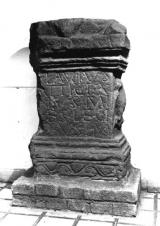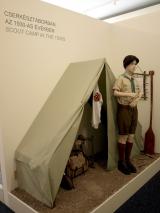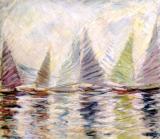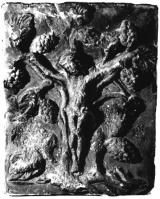2025. July 3. Thursday
Balaton Museum - Keszthely

|
Address: 8360, Keszthely Múzeum u. 2.
Phone number: (83) 312-351, (83) 511-335
E-mail: titkarsag@balatonimuzeum.hu
Opening hours: 01.09-31.10.: Tue-Sat 10-17, 01.11-30.: Tue-Sat 10-16
|
The thought of establishing a museum in the area of the lake Balaton first occoured in the last decade of the 19th century. The Balaton Museum Union was formed in June 1897.
The archaeological collection of Árpád Csák was exhibited in the building of the former Economy Learning Center. The natural science department was formed, the library was growing, and János Sági laid the foundations of the ethnography department.
The improvement of the various departments were helped by the financial support of the government. Due to the good financial conditions Csák Árpád could carry out excavations in Alsópáhok, in the field of Dobogó, Balatonhídvég and Újmajor. The museum was also given an independent building site.
In 1913 the collection of the various departments reached to the following numbers: relics: 9485, ethnography: 806, region history: 806, natural history: 3528. Th elibrary had 3630 volumes. During world war I there was only a slight increase in the departments, but the defence history section became an independent division at that time.
The museum building was erected in the 1920'ies. The neobaroque building was disigned by Dénes Györgyi. The collections were placed within the walls in 1935. The natural science exhibition was opened, then the archaeological material was shown.
By the fusion with the Darnay Museum of Sümeg the number of the collected items significantly grew. However, the new items were Fnot exhibited, for the museum was about to be nationalized. But this only took place in 1949.
The farther development was obstructed by the second world war. In March 1945 the wrapped materials of Keszthely and Sümeg were put on a train, but a bomb destroyed the irrecoverable values, together with those boxes of the Székely National Museum, which were entrusted to the care of the Balaton Museum.
The weakened museum only started to advance again after the permanent exhibition arranged in 1949.
The collection work after the war was supervised by József Csalog (1949-1951) and Károly Gaál (1951-1956) in all the departments. Between 1962 and 1979 more and more professional museologists were employed to work for th emuseum. The permanent exhibition which opened in 1967 was based upon the museum's own materials.
The museum building was renovated between 1980 and 1986. Since 1986 a new and complex exhibition has been representing th elife of the region of the Balaton. Many visitors are attracted to our temporal exhibitions of numerous kinds. Currently the museum owns about 380 000 registered items.
The archaeological collection of Árpád Csák was exhibited in the building of the former Economy Learning Center. The natural science department was formed, the library was growing, and János Sági laid the foundations of the ethnography department.
The improvement of the various departments were helped by the financial support of the government. Due to the good financial conditions Csák Árpád could carry out excavations in Alsópáhok, in the field of Dobogó, Balatonhídvég and Újmajor. The museum was also given an independent building site.
In 1913 the collection of the various departments reached to the following numbers: relics: 9485, ethnography: 806, region history: 806, natural history: 3528. Th elibrary had 3630 volumes. During world war I there was only a slight increase in the departments, but the defence history section became an independent division at that time.
The museum building was erected in the 1920'ies. The neobaroque building was disigned by Dénes Györgyi. The collections were placed within the walls in 1935. The natural science exhibition was opened, then the archaeological material was shown.
By the fusion with the Darnay Museum of Sümeg the number of the collected items significantly grew. However, the new items were Fnot exhibited, for the museum was about to be nationalized. But this only took place in 1949.
The farther development was obstructed by the second world war. In March 1945 the wrapped materials of Keszthely and Sümeg were put on a train, but a bomb destroyed the irrecoverable values, together with those boxes of the Székely National Museum, which were entrusted to the care of the Balaton Museum.
The weakened museum only started to advance again after the permanent exhibition arranged in 1949.
The collection work after the war was supervised by József Csalog (1949-1951) and Károly Gaál (1951-1956) in all the departments. Between 1962 and 1979 more and more professional museologists were employed to work for th emuseum. The permanent exhibition which opened in 1967 was based upon the museum's own materials.
The museum building was renovated between 1980 and 1986. Since 1986 a new and complex exhibition has been representing th elife of the region of the Balaton. Many visitors are attracted to our temporal exhibitions of numerous kinds. Currently the museum owns about 380 000 registered items.



